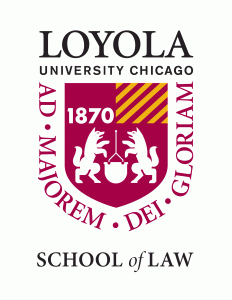Any former high school student remembers the drama of varsity athletics, whether you were an athlete or not. Filling the limited spots on the varsity team meant feelings were hurt, hearts broken, and dreams crushed.
Brandi Levy, the underage plaintiff in Mahanoy Area School District v. B.L. (2021), experienced this firsthand when she was rejected a spot on the Mahanoy Area High School varsity cheer team, and instead relegated to junior varsity. She was also denied her preferred softball position during tryouts for a private team. Like many kids her age, she turned to Snapchat to air her frustrations. While off campus, Levy posted a picture of herself and her friend raising their middle fingers with the caption “F— school f— softball f— cheer f— everything.”
Levy’s problems soon got even bigger. Other members of the cheerleading squad viewed the story and brought it to their coach’s attention. Levy was subsequently suspended from the junior varsity team. In response, she and her parents filed suit against the school district.
Social media fosters candid off-campus speech

Photo by Neelabh Raj on Unsplash
Since 2016, Snapchat has been the most popular social media platform among teenagers. The platform is particularly appealing to teens because the messages disappear, making it well liked among a demographic that likely wishes to maintain privacy from their parents. It is not surprising that teenagers would find it a safe space to be crude and candid among their private circle of friends. But as the Supreme Court decided in Levy’s case, the privacy that students take for granted does not come with complete immunity from school discipline, even if they are off campus.
Defining “on-campus” in an increasingly digital world
The Supreme Court decided that the school’s interest in punishing Levy for her speech did not overcome her First Amendment right to free speech. The school’s interest was weakened because Levy posted from a location off-campus and after school hours. The court also found that there was no substantial disruption to school activity to satisfy the test that the Supreme Court created in Tinker v. Des Moines (1969)
But the Court’s decision in Mahanoy was narrow, leaving a window of opportunity for a public school to discipline students for off-campus speech under certain circumstances. The decision outlines why the school cannot punish Levy’s speech – she was off campus, using her personal cell phone, and transmitting the Snapchat story to a private circle of friends. But still murky are the circumstances when a school can punish off-campus speech.
The Court had the opportunity to enumerate instances of off-campus speech that are punishable by schools but stopped short of doing so, citing the advent of computer-based learning as a reason for their hesitation. It also reasons that parents are more fit than school administrators to control their children’s off-campus speech.
In an increasingly digital world, the lines are blurred between on- and off-campus. For a significant period during the COVID-19 pandemic, “on-campus” very well might have meant a student’s dining room table. During the pandemic, the students’ lives became even more online, with no way to communicate other than through their phones. Without students murmuring and gossiping throughout the halls, the level of disruption caused by a social media post would be difficult to gauge.
Schools’ ability to punish off-campus cyberbullying

Photo by Annie Spratt on Unsplash
One issue left to be decided is the extent to which Mahanoy applies to cyberbullying. Levy’s speech was relatively mild. It was not directed at anyone in particular, nor did it cause substantial disruption at school. But that is not always the case. A 2019 study found that 15.7% of high school students reported being cyberbullied in the 12 months prior. Behind the safety of a phone screen, kids feel more comfortable saying things they may not say to somebody in person, creating a hotbed for bullying.
The Court chose not to decide what kinds of off-campus speech for which schools can punish students. It only decided that the Constitution does not entirely prohibit the punishment. In doing so, it avoided ruling on whether cyberbullying is punishable. Therefore, the Tinker standard still controls — if an instance of cyberbullying does not materially disrupt classwork, the victim cannot rely on the school to stop the offending speech.
Not every instance of cyberbullying will be found to materially disrupt classwork. A single student being cyberbullied might experience a social emotional response that materially disrupts their own life and learning, but that might not be enough to satisfy the demanding Tinker standard. Thus, victims of cyberbullying that takes place off-campus and outside of school hours cannot necessarily rely on their school to take measures to stop their harassment.
The Court waived the opportunity to determine once and for all whether schools can use disciplinary tools to protect victims of cyberbullying. The Tinker standard is hard to meet in an increasingly online world – substantial and material disruption to classwork is difficult to gauge if students are not actually in class. And as students are expected to do more and more schoolwork after school hours in online classrooms, the substantial disruption may be taking place inside of the home instead of in the physical classroom. Leaving the students and their parents to hash out issues themselves will produce inconsistent results – not every parent is willing to believe that their child is a bully and may hesitate to intervene.
Schools are equipped with staff, such as social workers and school counselors, who are trained to handle conflict between students outside of the sensitive family dynamic. Students spend most of their days with each other at the school, whether physically or virtually. School officials may be more conscious of the on-campus conflicts that lead to off-campus cyberbullying, making them better suited to handle the issue from their close perspective. But, without appropriate guidance from the Court as to what they can and cannot do to discipline students, administrators may be discouraged from solving the problem at all. And while we wait for an unequivocal ruling from the Court, victims of cyberbullying will continue to suffer.
Isabella Winkler wrote this blog post as part of the Education Law and Policy course.

